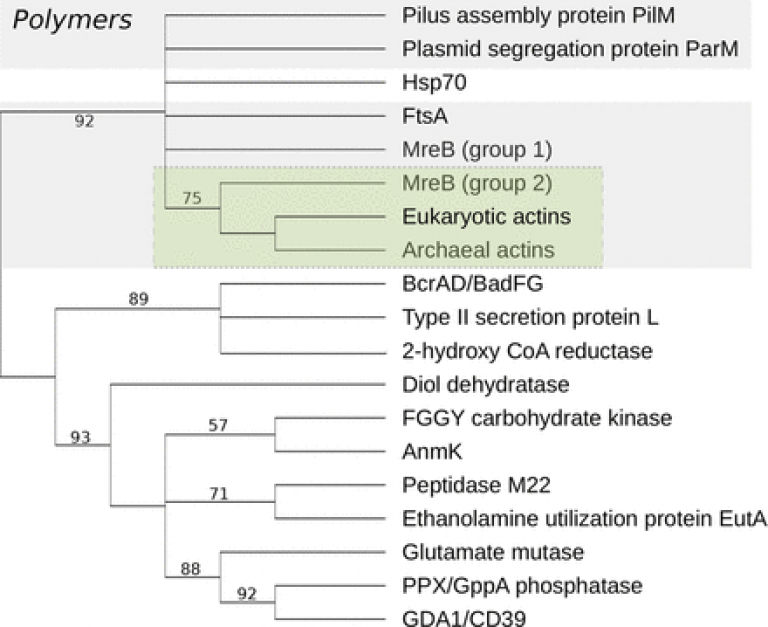New publication in Molecular Biology of the Cell for Baum Lab
2 October 2017

Perspective: Evolution of polymer formation within the actin superfamily
While many are familiar with actin as a well-conserved component of the eukaryotic cytoskeleton, it is less often appreciated that actin is a member of a large superfamily of structurally related protein families found throughout the tree of life. Actin-related proteins include chaperones, carbohydrate kinases, and other enzymes, as well as a staggeringly diverse set of proteins that use the energy from ATP hydrolysis to form dynamic, linear polymers. Despite differing widely from one another in filament structure and dynamics, these polymers play important roles in ordering cell space in bacteria, archaea, and eukaryotes. It is not known whether these polymers descended from a single ancestral polymer or arose multiple times by convergent evolution from monomeric actin-like proteins. In this work, we provide an overview of the structures, dynamics, and functions of this diverse set. Then, using a phylogenetic analysis to examine actin evolution, we show that the actin-related protein families that form polymers are more closely related to one another than they are to other nonpolymerizing members of the actin superfamily. Thus all the known actin-like polymers are likely to be the descendants of a single, ancestral, polymer-forming actin-like protein.
 Close
Close

